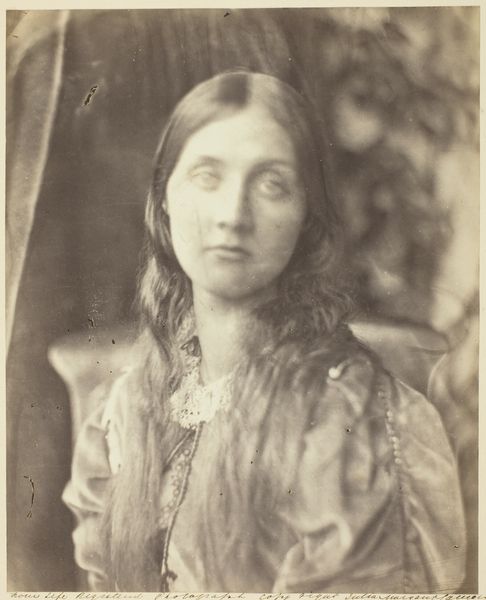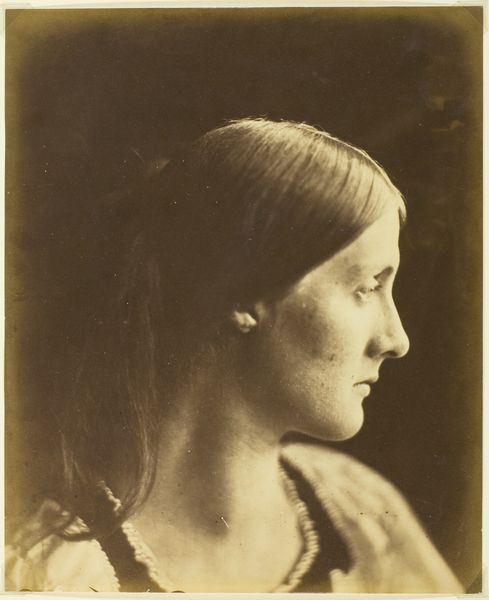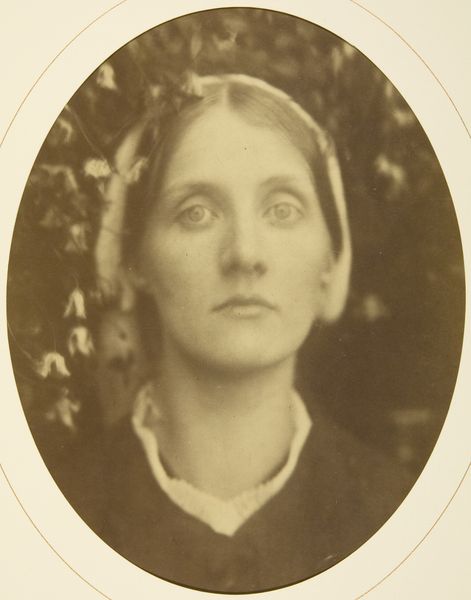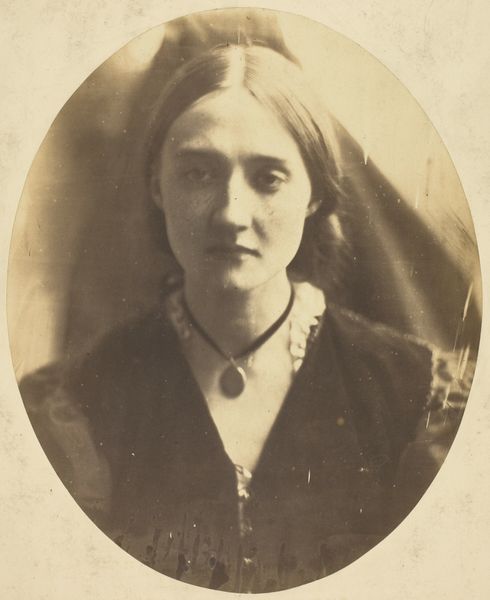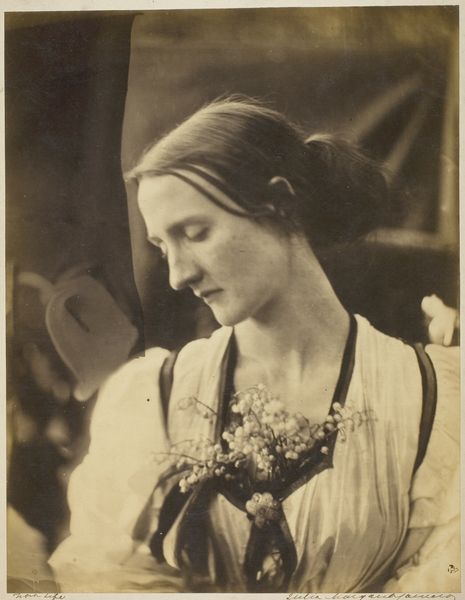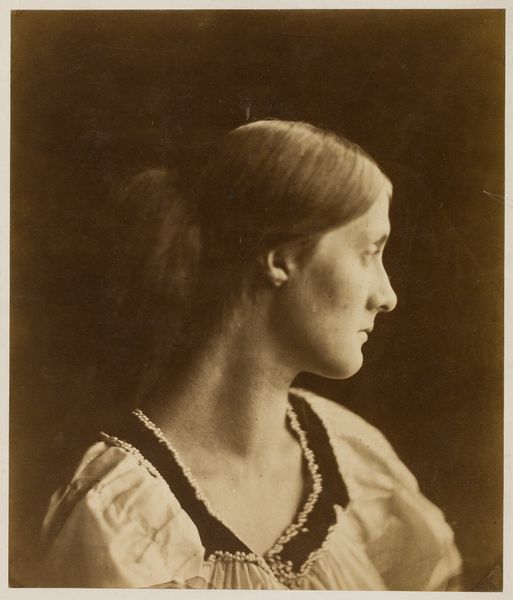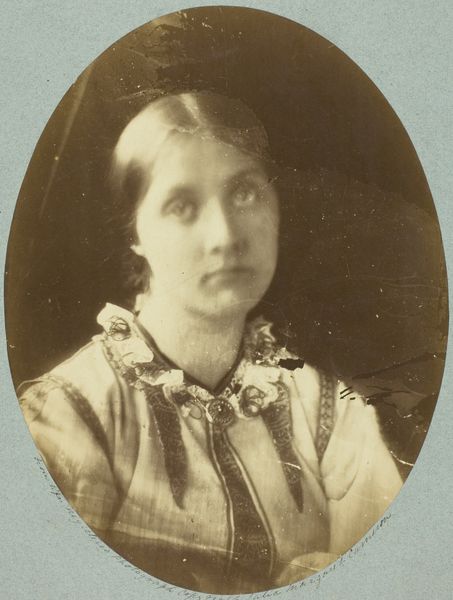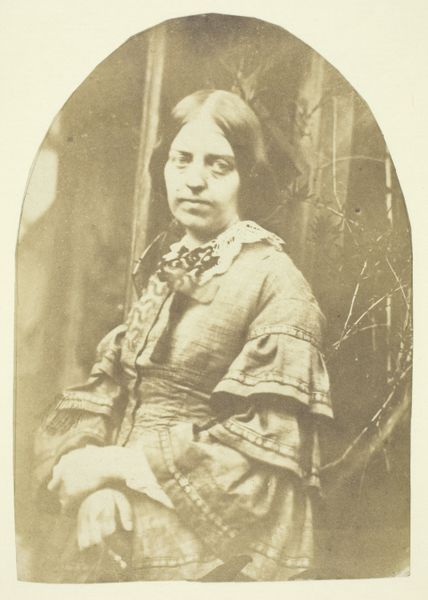
Dimensions: 25.2 × 20.1 cm (image/paper); 38 × 28.5 cm (mount)
Copyright: Public Domain
Curator: Here we have "Julia Jackson," a photograph created by Julia Margaret Cameron around 1864 or 1865, now residing here at The Art Institute of Chicago. Cameron, celebrated for her distinctive portraits, primarily used the albumen print process to create her images. Editor: Well, she's certainly got a wistful air about her, doesn't she? A melancholic daydream unfolding behind those eyes. The soft focus, almost ethereal, gives it this wonderful romantic vibe, like a memory surfacing through water. Curator: Absolutely. Cameron's work deliberately challenged the sharp precision that defined much of Victorian photography. The soft focus was a conscious artistic choice, aligning her photographs with the aesthetics of painting and emphasizing emotional resonance over clinical detail. Editor: It's almost defiant in that imperfection. It throws the Victorian obsession with crisp representation right out the window. You almost feel closer to her. Like she's not a perfect porcelain doll, but a breathing, thinking person. A far cry from the formal rigidity one expects from photographs of this era. Curator: Indeed. Julia Jackson, Virginia Woolf’s mother, was part of Cameron's social circle. In the context of Victorian society, these portraits also become a study in female representation and authorship. Cameron's gaze, a female gaze, capturing another woman offers us unique insight, quite distinct from the traditional patriarchal depictions we see so often. Editor: You can see it. There is an intimacy in it, a delicate regard that’s clearly feminine. Makes you wonder what it was like on the other side of that lens. There’s something vulnerable in her posture, a hesitant, almost questioning spirit… She certainly has an otherworldly beauty that Julia managed to highlight perfectly. Curator: I think understanding the social milieu, the pre-Raphaelite influences, and Cameron's defiance of photographic norms opens the door to a deeper appreciation of her portraits as not just likenesses but powerful artistic and social statements. Editor: This piece makes you wonder, you know? And that's the beauty of it. That’s where the magic lives, in that strange, imperfect, blurry space between the subject and the eye of the artist. Curator: I completely agree. This photograph functions on multiple layers – historical document, artistic expression, and an exploration of female identity. Editor: Exactly. She really makes you dream of days gone by!
Comments
No comments
Be the first to comment and join the conversation on the ultimate creative platform.
